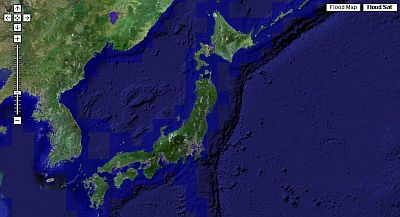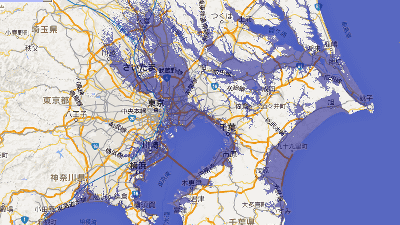Possibility that more than 10 million Americans will be 'isolated' in 100 years due to sea level rise due to global warming

It has long been feared that the sea level rise associated with global warming will submerge low-lying areas, narrowing the living space for humans. A new study points out that even if human living spaces are not submerged, sea level rise could make roads and bridges unusable, leaving many people 'isolated'.
Risk of isolation increases the expected burden from sea-level rise | Nature Climate Change
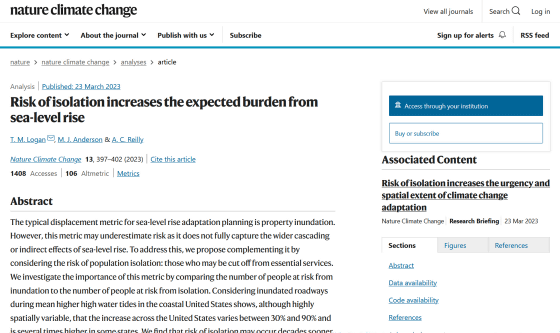
Mapping the risks of isolation due to sea level rise associated with global warming
https://phys.org/news/2023-03-isolation-due-sea-global.html
Rising Seas Threaten to Cut Off Millions of Americans This Century : ScienceAlert
https://www.sciencealert.com/rising-seas-threaten-to-cut-off-millions-of-americans-this-century
Much of the research related to sea level rise has focused on submerging 'people's property', but in these studies socially important 'roads' that are not owned by anyone are submerged. However, the possibility of becoming impassable is not taken into account.
It's not always the case that a part of an area is surrounded by the sea, but even the temporary submersion of major roads and bridges isolates the area until the water recedes. This phenomenon can occur when a large storm like a hurricane occurs, but it may occur frequently at high tide as the sea level rises.
Isolation cuts off access to key infrastructure and significantly reduces quality of life. For example, if the roads in an area become flooded at each high tide, cutting off the route to the nearest grocery store, people living in that area will not have access to food at each high tide. Of course, you can stock up on food before high tide, but this is only a stopgap measure.

A research team from the University of Canterbury in New Zealand and the University of Maryland in the United States said, ``Indices based on flooding of properties may underestimate risk because they do not adequately capture the broader, cascading and indirect impacts of sea level rise. There is a possibility, ”he said, and conducted an analysis that considers people who are isolated from essential services due to sea level rise.
The research team mapped roads in the mainland of the United States using data obtained from the open data map project
Looking at the graph below comparing the population (blue) of the United States ``isolated'' and the population ``inundated'' (red) due to sea level rise (horizontal axis), the population at risk of flooding We can see that the population at risk of isolation is 30-90% higher than .
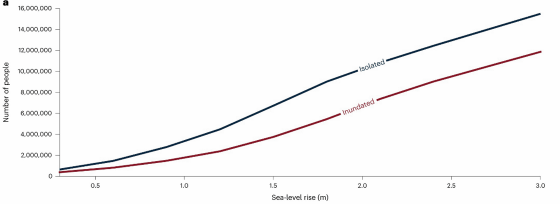
Below is a graph of the isolated or flooded population in a scenario where the sea level rises by 0.5 m by 2100. More than 600,000 people could be isolated by 2080.

Looking at the graph for a 1m sea level rise scenario by 2100, we can see that by 2080 the isolated population will reach about 900,000.

A 2m sea level rise scenario by 2100 showed that nearly 15.5 million people could be stranded by 2130.
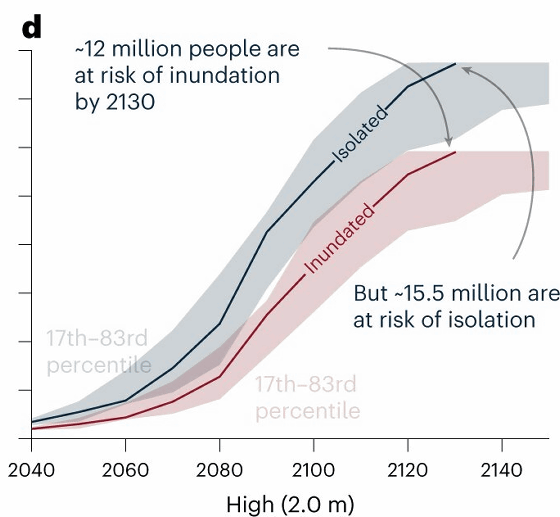
``We found that the risk of isolation can occur decades earlier than the risk of flooding. It will be important information in the
Related Posts:
in Science, Posted by log1h_ik
